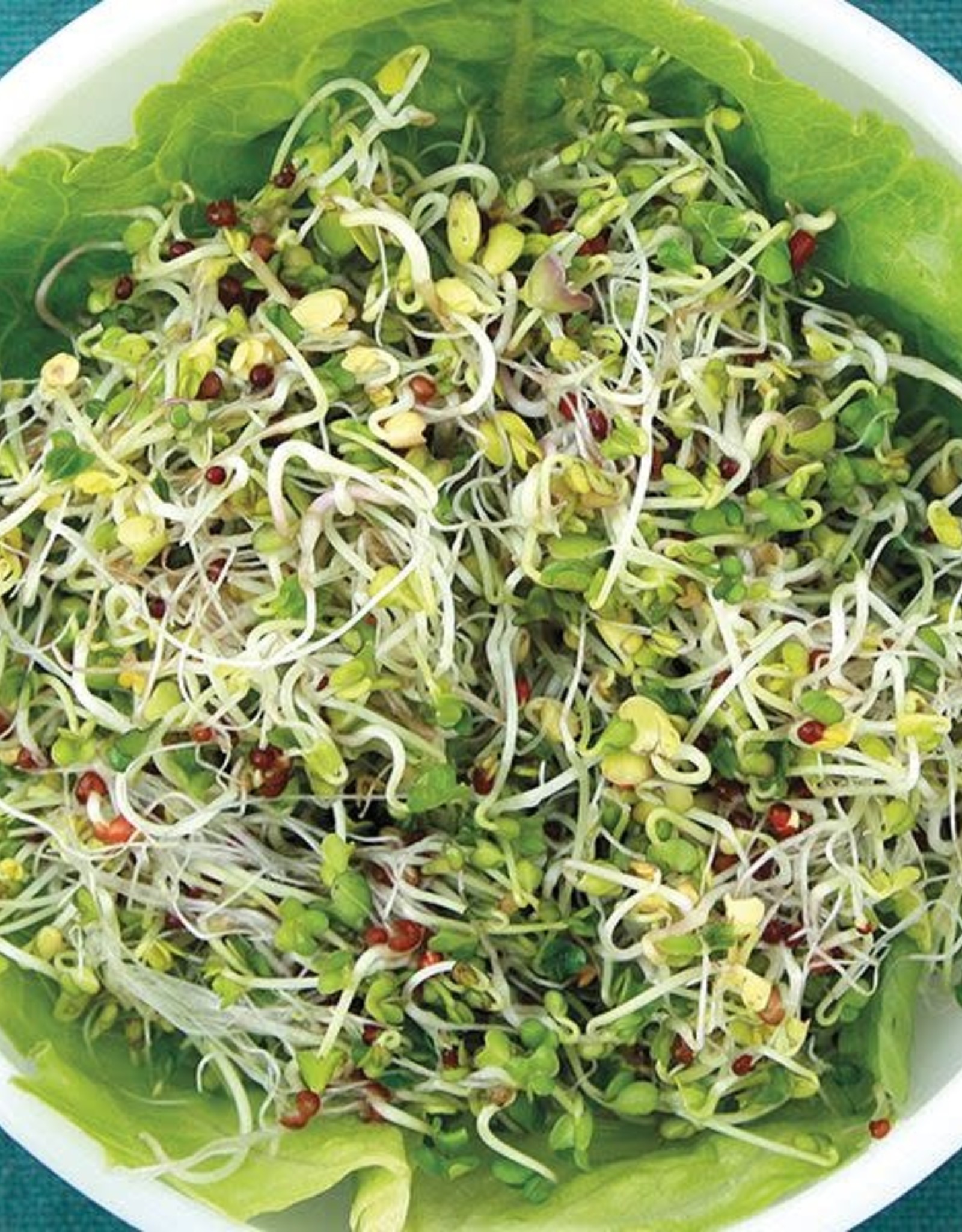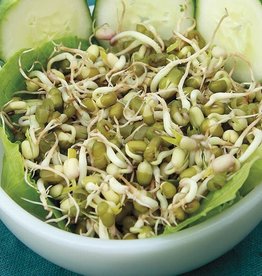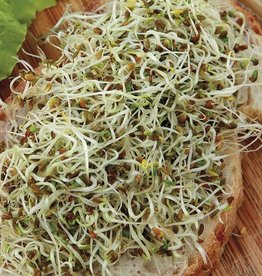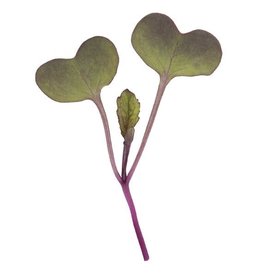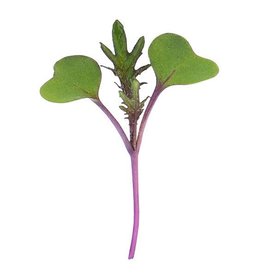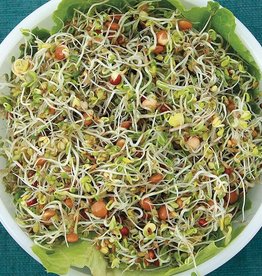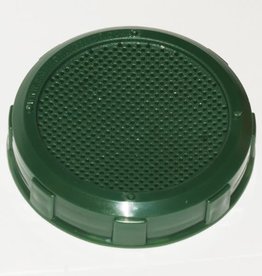HM Broccoli Blend Sprouting: 3 OZ
| Availability: | In stock (6) |
Photo and description credit-High Mowing Seeds
This blend, rich in antioxidants, contains broccoli, broccoli raab, radish, mustard and arugula.
- An easy, antioxidant-rich mix of broccoli, broccoli raab, radish, mustard, and arugula with spicy flavor.
- Soaking Time: 2 hours
- Sprouting time: 4-5 days
- Recommended methods: Sprouting Tray
- Yield: 1 Tbsp = 3-4 cups
Watch our "How to grow sprouts" video here.
CULTURAL INFO
First, some Food Safety
Our certified organic, Non-GMO Project Verified sprouting seeds are available throughout the country and we take the safe handling of our sprouting seeds very seriously.
Our process:
- We test every lot of our sprouting seeds to ensure a high germination rate and freedom from pathogens like Listeria, Salmonella, and E. coli.
- Our sprouting seeds are packed and sealed in a food safe facility following strict food safety protocols.
- We take sealed samples from each packing run and send them to an independent lab to test again for any contamination with pathogens. We do not ship to our customers until we get the pathogen-free test results back.
- Each package has lot and batch tracking codes for full product traceability.
- We have a recall protocol in place if an issue ever arises.
Sprouts and Shoots
Sprouts and shoots are grown for their tender and nutritious young seedlings.
Shoots are similar to micro-greens, being grown in medium and clipped along the stem, and tend to be large seeded crops, like peas, popcorn and sunflowers.
Sprouts are immature seedlings that are eaten just after seedlings emerge and cotyledons open up but before any true leaves appear. The most popular types of sprouts are greens and grains, with notable health interest in broccoli or other Brassica crop sprouts.
Growing Shoots
Best results are acquired when seed is soaked 8-12 hours before planting unless using a hydroponic system. Choose flats with drainage holes for planting, 1020 plastic flats work well. Fill flats to an inch or more with moist potting soil or soil-less mix. Plant seed at an appropriate depth for the crop type. Even and constant moisture is essential for vigorous and uniform sprouting. Ensure moisture by covering seeds by lightly sprinkling medium over seeds or use a clear dome to cover tray. Remove dome after seedlings emerge to avoid mold and rot. Flats can be placed under grow lights, outdoor under shade, or in hoophouses with natural light. Harvest by clipping stems when first true leaves appear between cotyledon leaves, on average about 10 days after planting. Wash greens and dry on towels, in salad spinner or place them into mesh bags and spin dry for 5-15 minutes in washing machine. Store refrigerated in plastic bags. Micro-greens are also sold by the flat and customers clip right before using for best quality.
Growing Sprouts
Sprouts are best grown in glass or plastic containers, in seed sprouters or on mesh or screened flats in low light intensity. Plants are greened up within a few hours of harvesting or eating. Best results are acquired when seed is soaked and washed on a regular cycle. Each seed packet of sprouts has specific information on label about its specific soaking and rinsing schedule.
Seed Specs
See individual crop page
Harvest
Quickly cool sprouts by rinsing in cool water when they are at desired size. Excess water should be removed when packed.
Storage
Store in refrigerator wrapped or in container.
Market Grower Regulations for Sprouts:
Growing sprouts organically depends entirely upon the ability of the producer to achieve adequate levels of sanitation using materials approved by the certifying organization. Until the development of consistent national organic standards, each individual must address this issue according to the rules under which he or she is currently certified. Growing sprouts has been defined by the Food and Drug Administration (FDA) as a food processing activity, not an agricultural one. As a result, FDA (not USDA) regulates the production process and the facilities in which sprouts are grown. Further information on food safety related to sprout production can be found at http://vm.cfsan.fda.gov/~mow/foodborn.html or contact ISGA.

